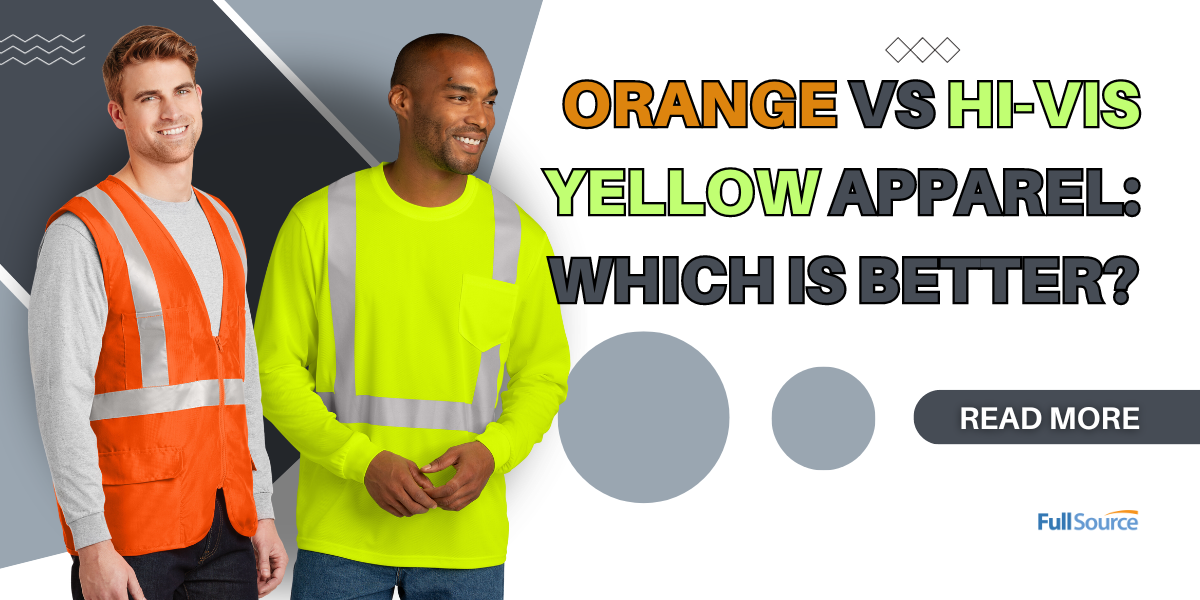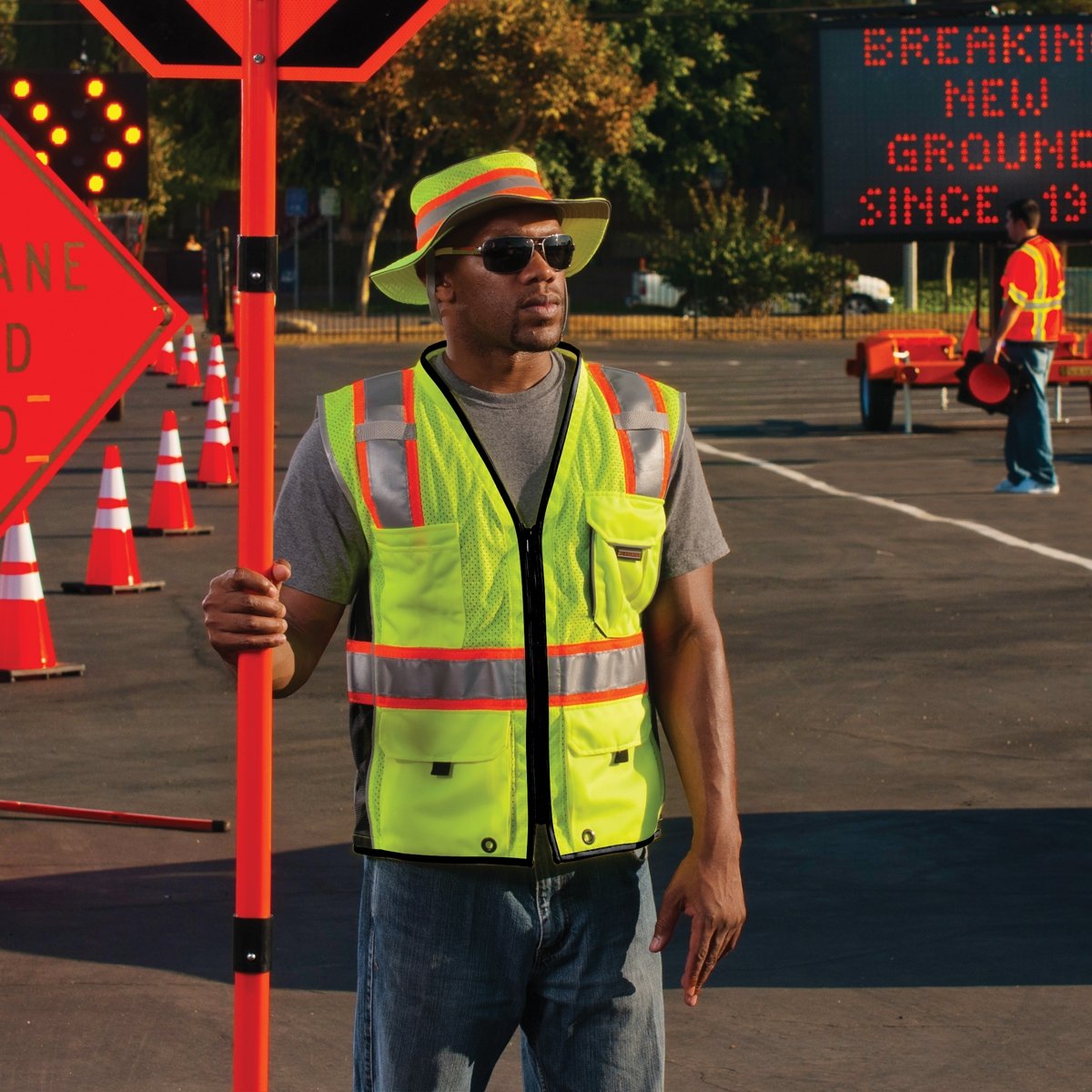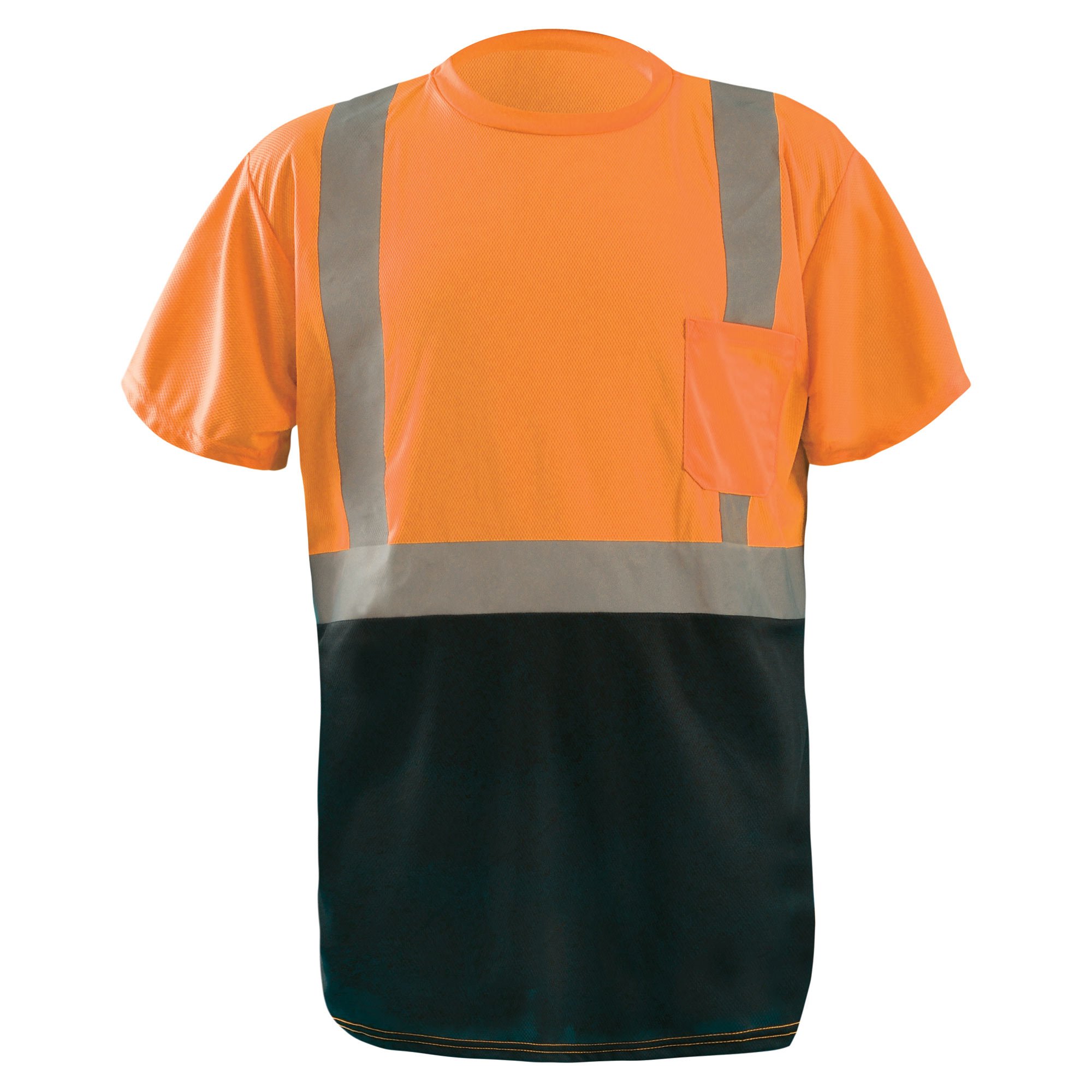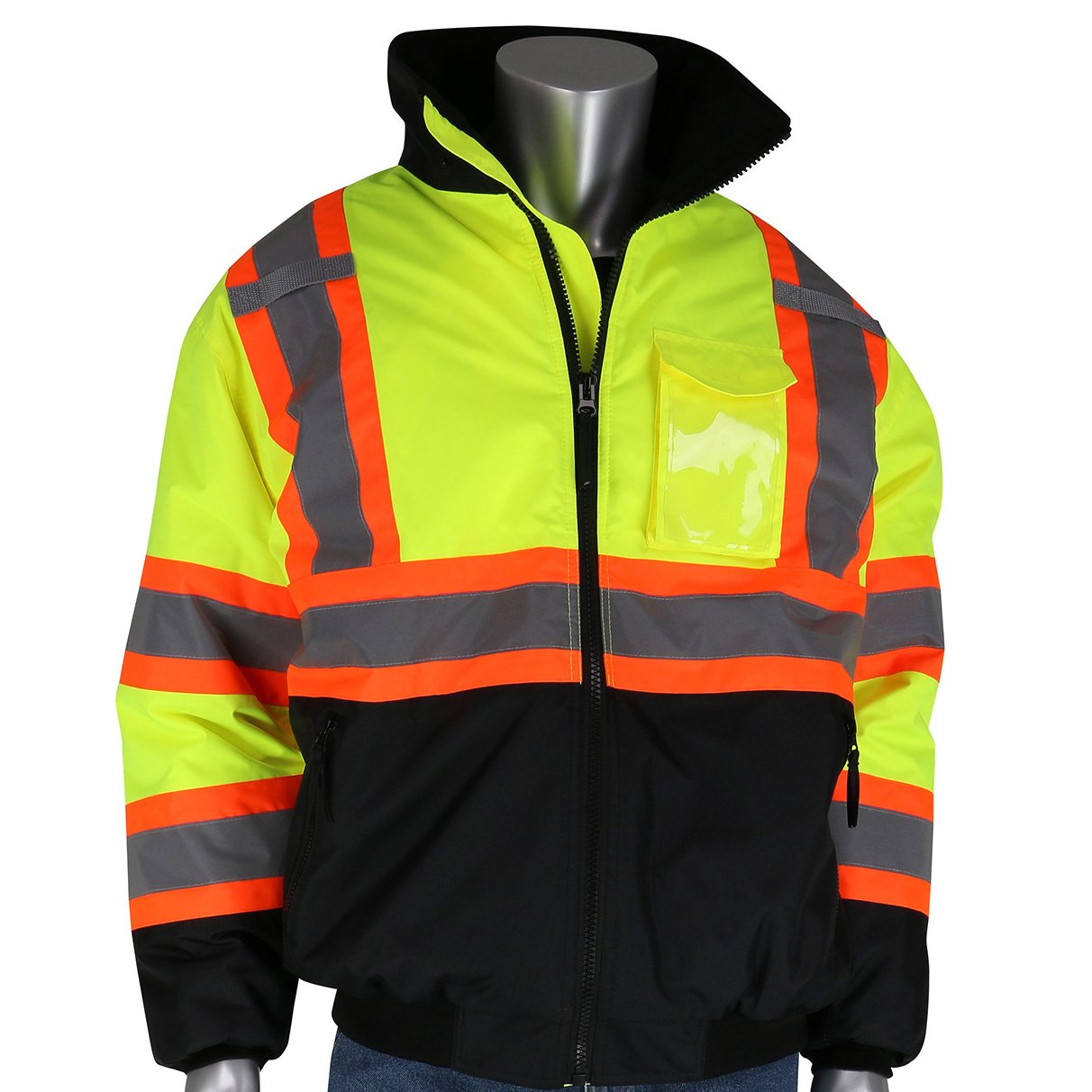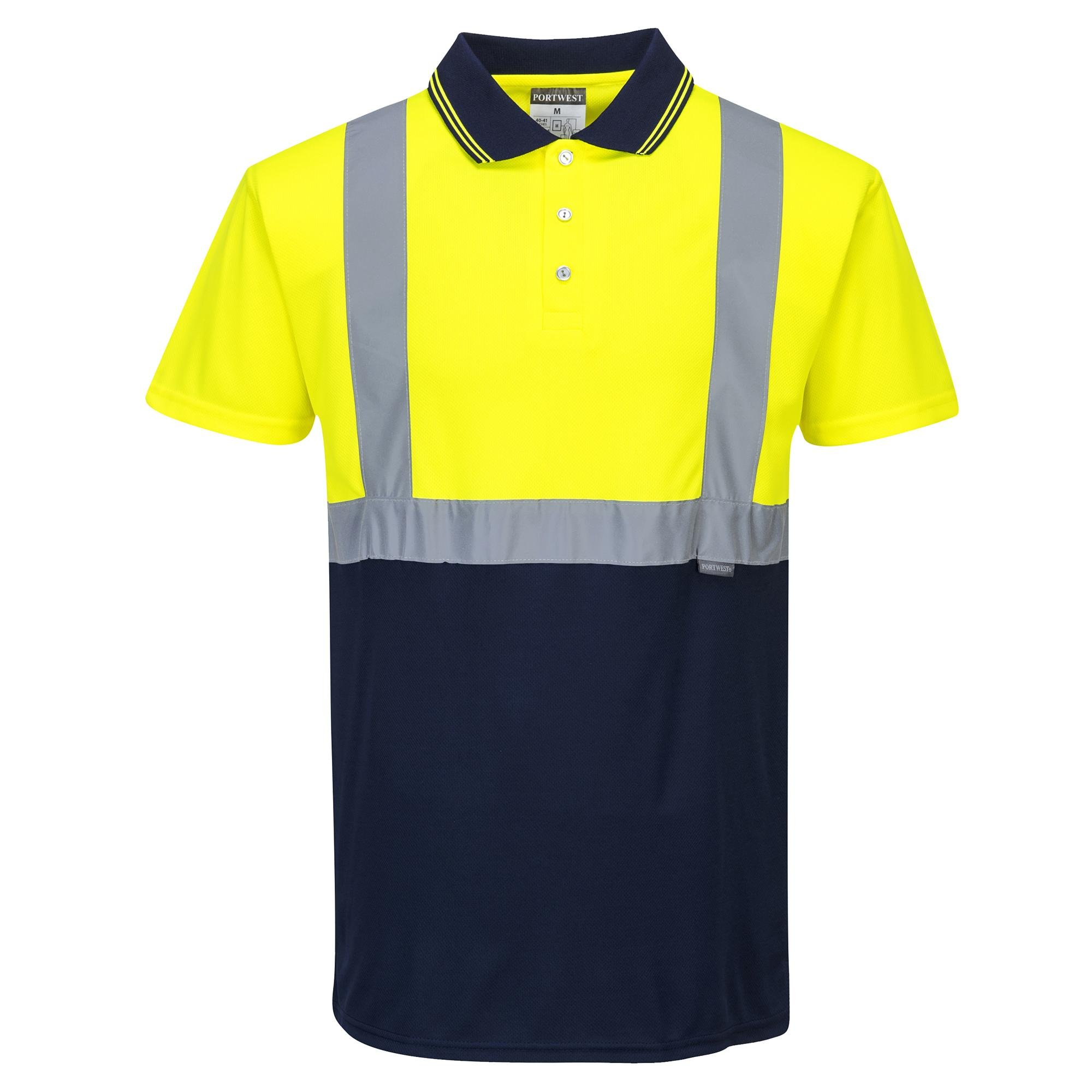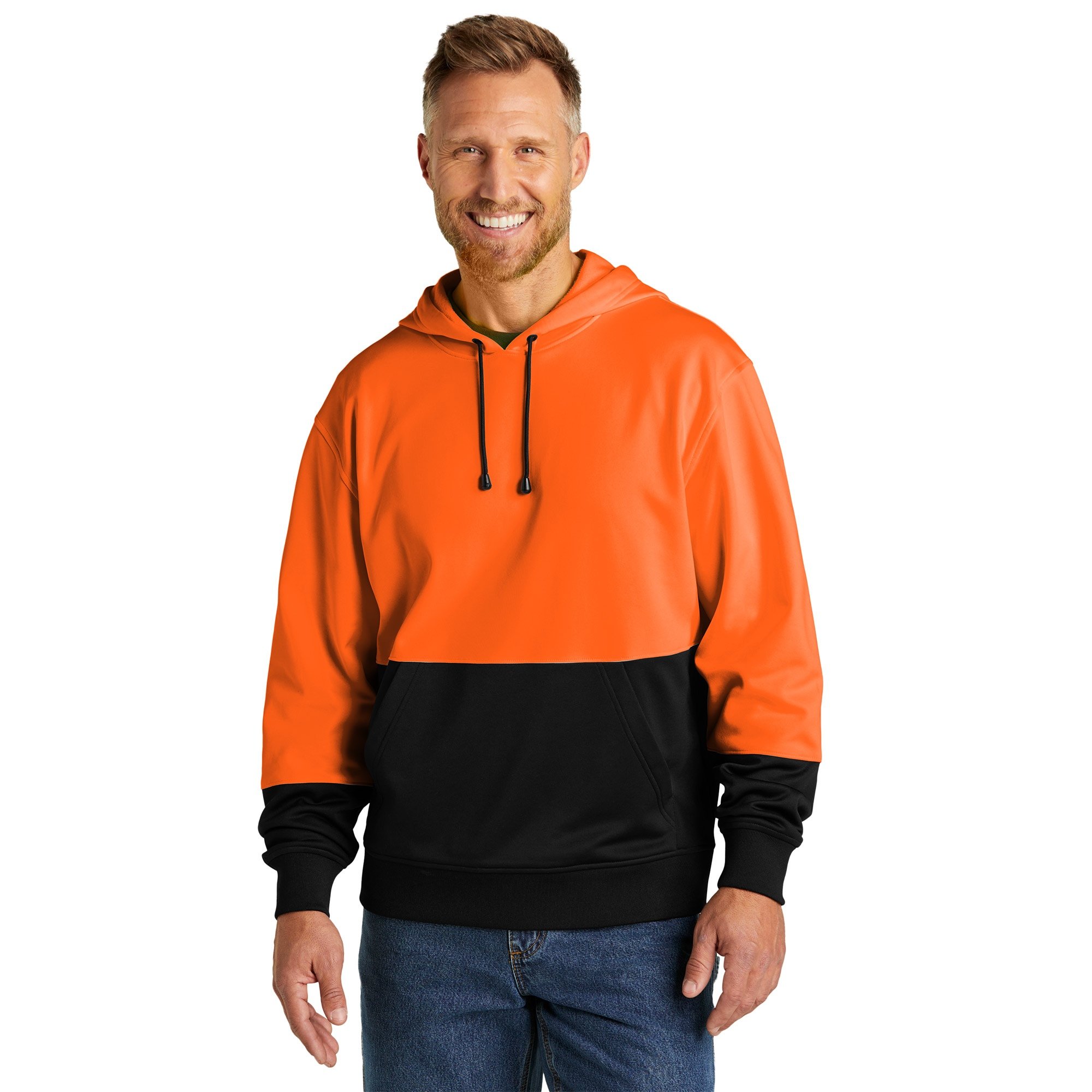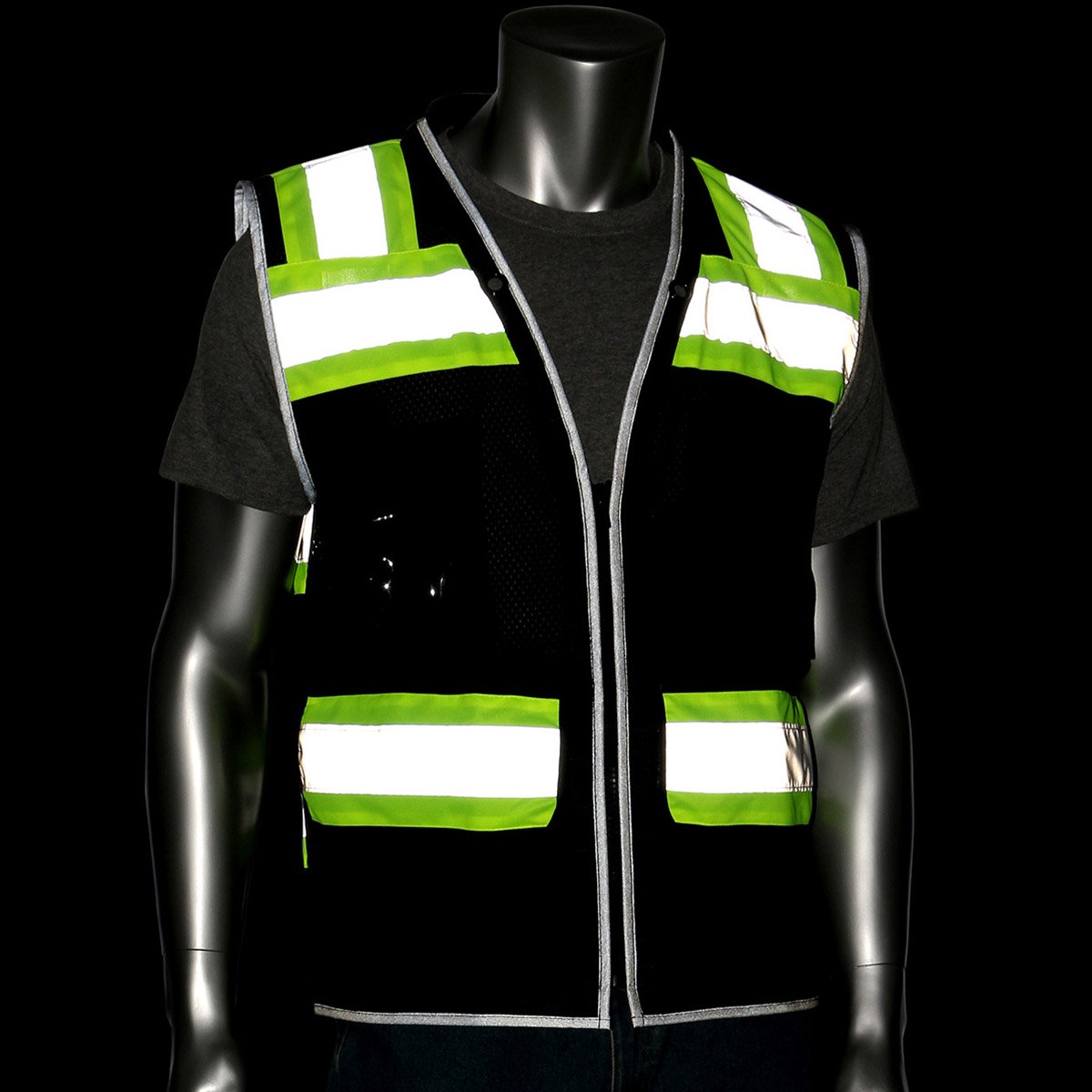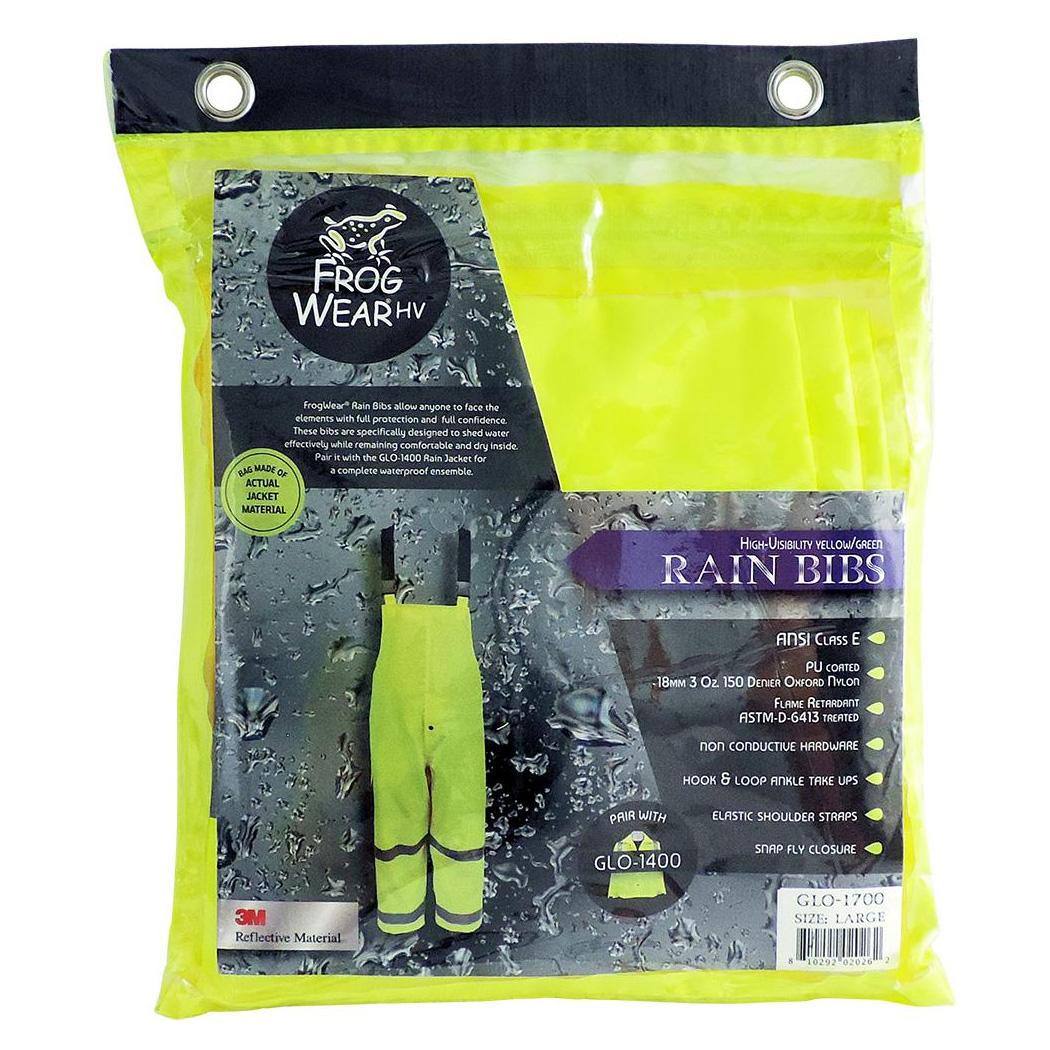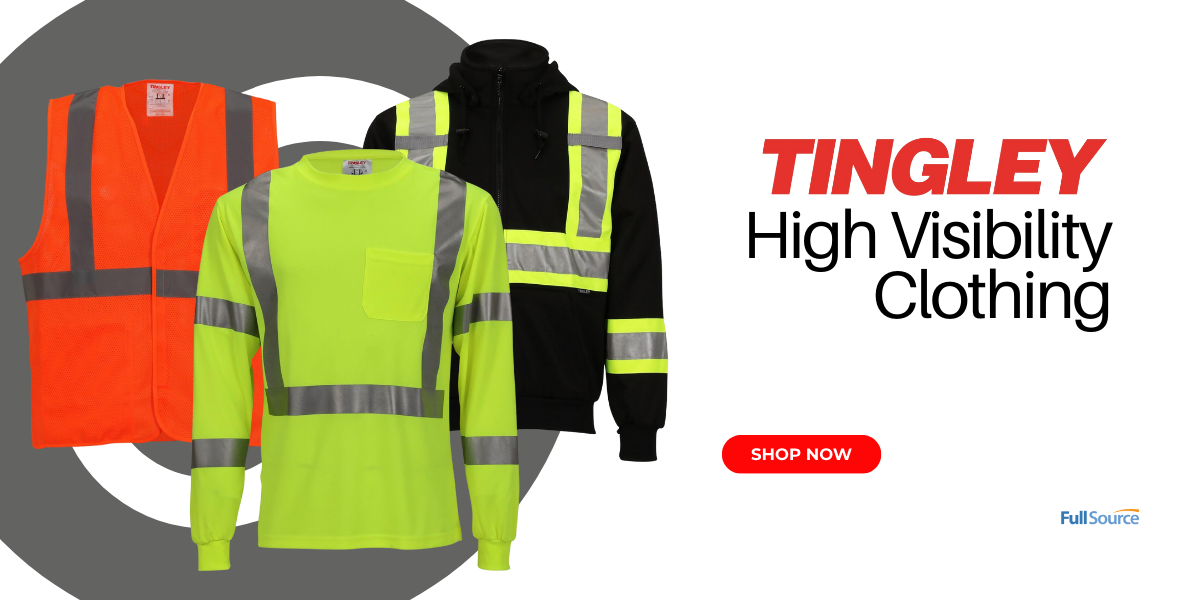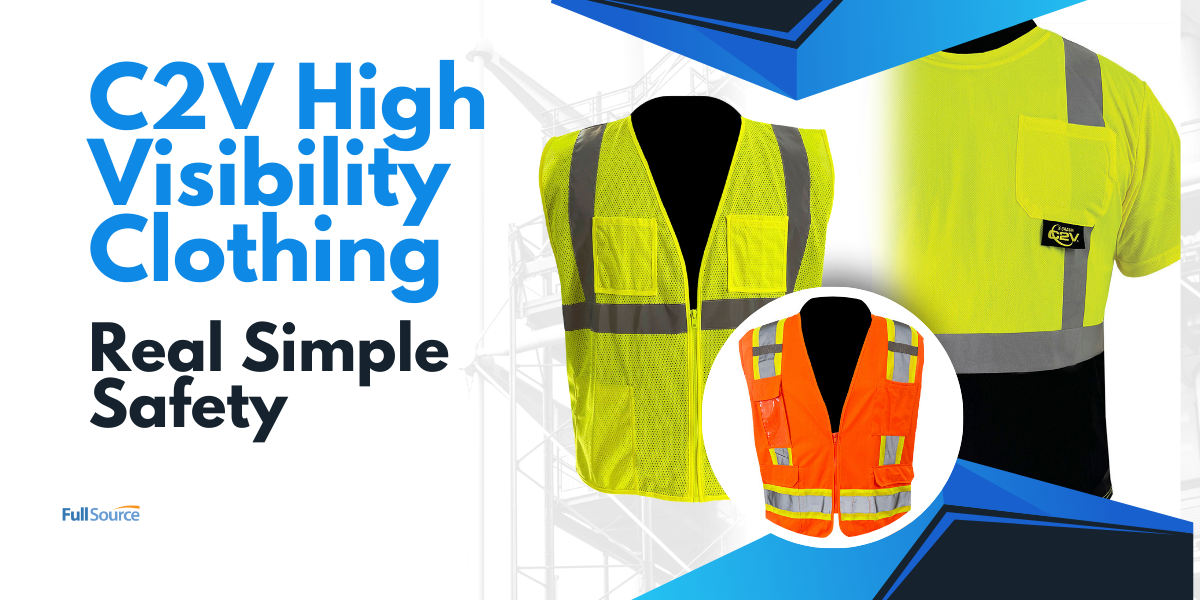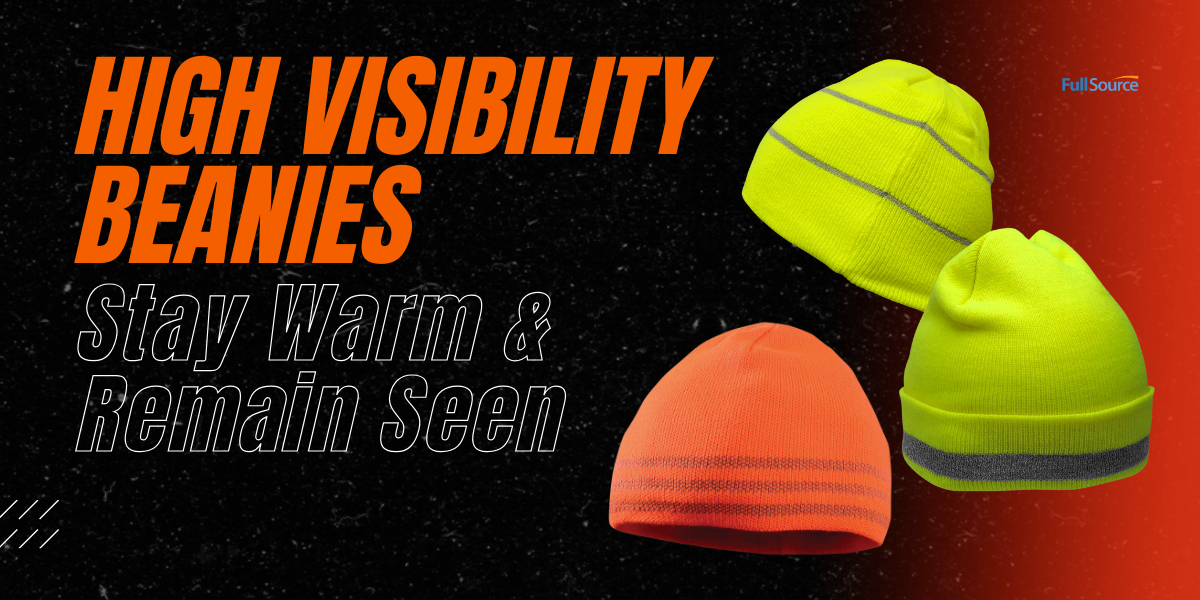In the world of safety apparel, welcome to the ultimate showdown: Hi-Vis Orange vs Hi-Vis Yellow! When it comes to safety apparel, visibility is key. Whether you’re working on a construction site or out on the roads, being seen can literally be a matter of life and death. But which color reigns supreme? Join us as we dive into this colorful debate and uncover which shade takes the crown for being more effective in keeping workers safe. Buckle up, folks – this is going to be one illuminating ride!
Introduction to Hi-Vis Safety Apparel
First of all, hi-vis safety apparel, also known as high visibility or hi-viz apparel, is a type of clothing designed to be easily visible in any lighting conditions. It is often worn by workers who perform tasks in low light, construction, or high-traffic areas where there is a risk of accidents.
The use of hi-vis safety apparel has become an essential aspect of workplace safety regulations in many industries such as construction, road work, and public utilities. The primary purpose of these garments is to make workers more visible and therefore reduce the risk of accidents occurring due to low visibility. And most of our hi-vis safety apparel is customizable with your company name or logo. Select from printing or embroidery. Custom logos add a personal touch to your work clothes and help to promote your brand or business.
Types of Hi-Vis Safety Apparel
And there are several main types of hi-vis safety apparel: vests, jackets, and coveralls. Safety vests are the most common type and are often used in outdoor work environments. They come in various styles such as mesh or solid fabric with reflective tape for increased visibility. Our best-selling safety vests include options for men and women from brands like Radians, Pyramex, Kishigo, and PIP.
And our hi-vis safety jackets are ideal for colder climates and can provide both warmth and high visibility. They also have additional features such as hoods, pockets, and adjustable cuffs for added functionality. Also, select from high visibility orange and yellow/lime safety jackets in styles like bomber, parka, and soft shell. There are also hi-vis rain jackets, sweatshirts, and ANSI rated options.
Also, hi-vis orange and yellow color overalls offer full-body coverage and protection from hazardous materials while also providing high visibility. They are used in industries such as construction, automotive, utility, and roadwork. Portwest high visibility overalls and coveralls include ANSI Class E, 3, and Type R styles. And they have features like hoods, contrasting colors, and silver reflective tape. Hi-vis coveralls also include waterproofing, pockets, and quilt lining for added warmth and insulation.
Materials Used for Hi-Vis Safety Apparel
Hi-vis safety apparel is made from fluorescent materials that can reflect light from different sources like headlights or streetlights. These materials include polyester, nylon blends, vinyl-coated fabrics, and polyurethane-coated nylon.
Apart from the fluorescent material, hi-vis apparel also has reflective stripes or tape that reflects light back to its source. This makes the wearer more visible from all angles, even in low-light conditions. And this makes most reflective hi-vis apparel ANSI Class 2 or 3 rated for the job site.
Standards for Hi-Vis Safety Apparel
Also, in many countries, there are standards and regulations that govern the design and use of hi-vis safety apparel. These standards specify the color, materials, and construction of high-visibility garments to ensure their effectiveness in improving visibility and safety.
For example, in the United States, the American National Standards Institute (ANSI) sets standards for hi-vis apparel based on three classes:
– ANSI Class 1: The lowest level of protection intended for workers who are not exposed to traffic or moving equipment. Our Portwest PW374 PW3 Hi-vis reversible vest meets Type O Class 1 safety standards.
– ANSI Class 2: Provides medium-level protection for workers exposed to moderate traffic or moving equipment. And our ANSI Type R Class 2 safety vests include hi-vis yellow, hi-vis orange, and two-tone options.
– ANSI Class 3: The highest level of protection for workers who are frequently exposed to high-speed traffic or working in low-light conditions. Most ANSI Class 3 safety vests also have sleeves, providing additional material and visibility.
Benefits of Hi-Vis Safety Apparel
The primary benefit of hi-vis safety apparel is improved visibility. This reduces the risk of accidents and injuries in hazardous work environments. It also allows workers to stay identifiable on job sites, making it easier to monitor their location and movements.
The Importance of High Visibility in Work Environments
Most noteworthy, the importance of high visibility in work environments cannot be overstated. In industries such as construction, roadwork, and manufacturing, workers face exposure to potential hazards on a daily basis. In order to ensure their safety, it is essential for them to remain seen by others on the job site.
High visibility apparel plays a crucial role in creating a safe work environment. This type of clothing features bright colors and reflective materials that make workers stand out from their surroundings. Hi-vis apparel comes in two main colors – orange and yellow – both of which have their own unique benefits.
One of the key reasons why high visibility is so important in work environments is because it allows for better communication between workers. When everyone on the job site can easily see each other, it becomes easier to coordinate tasks and avoid accidents. For example, if one worker needs to operate heavy machinery near another worker, being able to clearly see each other can prevent potential collisions or injury.
In addition, high visibility also increases worker safety when working around moving vehicles or equipment. Brightly colored hi-vis apparel allows drivers to spot workers from a distance and take necessary precautions while operating their vehicles. This is especially crucial in low light conditions. Or during bad weather when visibility is reduced.
Understanding the Difference between Hi-Vis Orange and Hi-Vis Yellow
When it comes to safety apparel, high visibility is a crucial factor. Workers in industries such as construction, roadwork, and mining require high-visibility clothing to ensure their safety on the job site. High visibility apparel comes in two main colors – orange and yellow. Both these colors serve the purpose of making workers more visible, but there are some differences between them that are important to understand.
Hi-Vis Orange
Hi-Vis orange is a vibrant shade of orange used for safety apparel. This color contrasts with most backgrounds, allowing workers to remain visible in low-light conditions or inclement weather. Hi-Vis orange is also known as “blaze” or “safety” orange. And is highly effective in catching the attention of others. And our orange color safety apparel includes safety vests, jackets, shirts, and coveralls.
One of the main advantages of hi-vis orange over hi-vis yellow is its ability to stand out against certain backgrounds. In environments with a lot of greenery or foliage, hi-vis orange can be more noticeable than hi-vis yellow. This makes it a popular choice for outdoor workers who need to be seen in natural settings. Our best-selling high visibility orange safety apparel includes brands like Radians, Kishigo, MCR Safety, and Pyramex.
In addition, hi-vis orange improves depth perception compared to other colors like yellow or red. This can be particularly beneficial for workers who need accurate depth perception while working with heavy machinery or equipment. Our orange safety apparel includes styles and sizes for men and women. There is also a large range of sizes from popular series like GloWear, Luminator, and Brilliant.
Hi-Vis Yellow
Hi-Vis yellow is a bright shade of yellow that is also used for safety apparel. This color is often referred to as “fluorescent” or “safety” yellow. And stands out against most backgrounds. And some hi-vis yellow safety apparel includes lime shades, making them known as hi-vis “yellow/lime”.
One of the main advantages of hi-vis yellow over hi-vis orange is its effectiveness in low-light conditions. The human eye can detect shades of yellow better than any other color, making it easier to spot someone wearing hi-vis yellow in dim lighting. And hi-vis yellow safety shirts like the Radians ST11 meet ANSI Type R Class 2 safety standards for the job site. The silver reflective tape helps enhance visibility.
However, one potential drawback of hi-vis yellow is its ability to blend in with certain backgrounds. In environments with a lot of foliage or greenery, workers wearing hi-vis yellow may not stand out as well as those wearing hi-vis orange.
Which one should you choose?
Ultimately, the choice between hi-vis orange and hi-vis yellow will depend on your specific work environment and personal preferences. If you work outdoors in natural settings with a lot of greenery or foliage, hi-vis orange may be a better choice. If you work in low light conditions or need to stand out against darker skin tones, hi-vis yellow may be a more effective option.
Many companies also choose to use a combination of both colors for their employees’ safety apparel. This can provide the best of both worlds and ensure maximum visibility in various situations. Whichever color you choose, it is important to regularly inspect and replace high visibility apparel as needed to maintain its effectiveness.
Factors to Consider
When it comes to safety apparel, choosing the right color is essential for ensuring maximum visibility and protection. In industries such as construction, road work, and emergency services, high-visibility clothing is a crucial element in preventing accidents and keeping workers safe. Two of the most popular colors for hi-vis apparel are orange and yellow. Both offer high levels of visibility, but there are several key factors to consider when deciding between them.
1. Environment/Worksite Conditions: When deciding between hi-vis orange and yellow, you should primarily consider the environment or worksite conditions in which you’ll wear it. Orange may be more effective in low-light or overcast conditions because it offers a higher contrast against most backgrounds. On the other hand, yellow may be more suitable for bright, sunny environments as it reflects light better.
2. Job Requirements: The nature of the job being performed should also play a significant role in color selection. For example, if workers are performing tasks near moving vehicles or heavy machinery that emits orange light (e.g., sodium vapor lamps), wearing hi-vis orange may not provide enough contrast for effective visibility. In this case, yellow may be a better choice.
3. Personal Preference: Some individuals have personal preferences towards one color over another based on visual acuity or personal style. It’s important to take into account what feels most comfortable and visible for each worker when making color decisions.
More Factors to Consider
4. Compliance with Standards: Hi-vis apparel must meet specific standards set by regulatory bodies such as the Occupational Safety and Health Administration (OSHA). And the American National Standards Institute (ANSI). These standards outline the minimum requirements for color, reflective material, and design of safety apparel. Make sure to check these standards before choosing between orange and yellow.
5. Visibility Distance: The distance at which a person can be seen depends on various factors such as background color, lighting conditions, weather, and worker movement. Overall, orange suits longer distances better than yellow. However, in dense or cluttered environments like forests with limited visibility distance, yellow might be more effective.
6. Color Fastness: Hi-vis apparel must maintain its color over time for maximum visibility. Orange tends to fade faster than yellow due to its chemical composition. If your workers will be wearing their safety gear frequently or under harsh conditions, consider choosing yellow over orange for long-lasting visibility. And our low-price economy safety vests allow you to swap out for new, bright, and clean vest for optimum safety.
7. Complementary Colors: In some worksites or industries, certain colors may already be prevalent or required (e.g., blue for law enforcement). In these cases, it may be better to choose a hi-vis color that complements the existing colors rather than clashes with them. Our blue safety vests also include two-tone options. These types of vests combine hi-vis yellow with silver reflective like the PIP 300-1000 non-ANSI vest.
Visibility in Different Lighting Conditions
Visibility in different lighting conditions is a critical factor to consider when choosing between hi-vis orange and hi-vis yellow safety apparel. Both colors are highly visible during the day, but their effectiveness can vary in low-light or nighttime situations.
In broad daylight, both hi-vis orange and hi-vis yellow stand out against most backgrounds due to their high levels of contrast with natural surroundings. This makes them equally effective options for increasing visibility and safety on worksites or in outdoor environments.
However, as the lighting conditions change, the performance of these two colors may differ. In low light or overcast weather, hi-vis orange tends to maintain its bright color more effectively than hi-vis yellow. This is because orange has longer wavelengths than yellow, making it easier for our eyes to detect in dimmer lighting.
Natural and Artificial Light
At dawn or dusk when there is limited natural light available, both colors may lose some of their vibrancy. However, studies have shown that hi-vis orange remains visible up to 40% longer than hi-vis yellow under these conditions. This means that workers wearing orange safety apparel will remain visible for a longer period before needing additional artificial lighting sources compared to those wearing yellow.
When workers face artificial lighting sources like streetlights or vehicle headlights at night, choosing between hi-vis orange and hi-vis yellow becomes even more critical. The reflective properties of these colors can make a significant difference in how quickly they catch the attention of drivers or equipment operators.
Hi-Vis yellow is often considered more effective than orange in these situations due to its high contrast with artificial light sources. The bright yellow color stands out against most backgrounds, making it easier for drivers to spot workers on the job site or on the road.
Overall, both hi-vis yellow and hi-vis orange provide excellent visibility in different lighting conditions. However, if you are working in low light or nighttime situations, hi-vis orange may be a slightly more effective option due to its longer wavelength and ability to maintain its brightness for a longer period.
Color Preference
In addition to visibility and safety considerations, personal preference may also play a role in choosing between hi-vis orange and hi-vis yellow safety apparel. Some individuals may have a strong preference for one color over the other based on personal experiences or associations with certain colors.
For example, some people may associate hi-vis orange with construction sites or roadwork. While others may have a negative connotation with this color due to its use in warning signs and traffic cones. Similarly, some individuals may prefer the eye-catching brightness of hi-vis yellow, while others find it too intense or distracting.
Effectiveness for Specific Work Environments
When it comes to safety apparel, one of the most debated factors is the color choice between hi-vis orange and hi-vis yellow. People commonly use both colors for high visibility clothing in various work environments, but which one is more effective? In this section, we will delve into the effectiveness of each color for specific work environments.
Construction Sites:
Construction sites have a busy and hazardous nature, making high-visibility clothing essential. When it comes to construction sites, both hi-vis orange and hi-vis yellow have their own advantages. Hi-vis orange is highly effective in low light conditions or during sunrise and sunset when there may be a mix of natural light and artificial light. The color stands out against common construction materials such as concrete or metal. On the other hand, hi-vis yellow is highly visible under bright sunlight. And can quickly catch the attention of workers and equipment operators on site.
Road Construction:
Also, just like construction sites, road construction areas also require high visibility clothing for workers’ safety. In this environment, hi-vis orange has a slight edge over hi-vis yellow due to its ability to stand out against different backgrounds such as asphalt or dirt roads. It also helps in directing traffic as it contrasts with red traffic signs and cones used on road construction sites.
Industrial Uses
Warehouse/Facility Work:
For workers in warehouses or industrial facilities that have low lighting or dimly lit areas, hi-vis orange would be more effective than hi-vis yellow. The color’s brightness makes it easier to spot workers even in low light conditions, ensuring their safety. And our lightweight safety shirts include mesh options that are breathable. This helps keep you cool while working in warehouses and enhances your visibility to other workers.
Emergency Responders:
Emergency responders, such as firefighters and EMS personnel, commonly use both hi-vis orange and hi-vis yellow. In this case, the color choice may come down to personal preference or department guidelines. However, people generally consider hi-vis orange more effective because it stands out against common emergency vehicle colors like red or white.
Outdoor Landscaping/Gardening:
For workers in outdoor landscaping and gardening environments, both hi-vis orange and hi-vis yellow can be effective. However, hi-vis yellow may be a better choice as it contrasts with natural elements such as green grass and trees.
Comparison of Brightness and Reflectivity
Brightness:
The first aspect to consider when comparing these two colors is their brightness level. Brightness refers to how intense a color appears to be. In terms of brightness, both orange and yellow are considered highly visible colors. However, studies have shown that during daylight hours, fluorescent orange has a higher LRV (Light Reflectance Value) than fluorescent yellow.
LRV is a numerical value used to measure the amount of visible light reflected by a surface. The higher the LRV number, the brighter the color appears. Fluorescent orange has an LRV range of 55-65%, while fluorescent yellow has an LRV range of 40-50%. Under natural lighting conditions, hi-vis orange stands out more and people can see it from a greater distance compared to hi-vis yellow.
Reflectivity:
And the second factor that determines visibility is reflectivity. Reflectivity indicates how much light a material returns when it encounters a light source. In terms of reflectivity, both colors have similar levels. Manufacturers use reflective materials like retroreflective tapes to make both fluorescent orange and fluorescent yellow. This increases visibility in low-light conditions.
However, the amount of reflectivity can vary depending on the quality and placement of the reflective material. For example, a high-quality reflective tape placed on a larger surface area will provide better reflectivity than a lower-quality tape on a smaller surface area. And our reflective clothing also includes accessories like hats, pants, gloves, and beanies. The hi-vis colors feature the same silver reflective tape as our safety apparel, completing the overall safety of the outfit.
Which color is better for hi-vis apparel?
Both hi-vis orange and hi-vis yellow are effective choices for safety apparel. However, if you are working in an environment with natural lighting, such as construction sites or road work zones, hi-vis orange may provide better visibility during the day due to its higher LRV value. On the other hand, if you are working in low-light conditions, both colors will offer similar levels of reflectivity.
Conclusion
In conclusion, both hi-vis orange and hi-vis yellow safety apparel have their own benefits and effectiveness. It ultimately depends on the specific working environment and personal preference. However, it is important to always prioritize safety by wearing high-visibility clothing that meets industry standards. Whether you choose orange or yellow, remember that these colors serve as a crucial warning sign for others to see you in potentially hazardous situations. Stay safe out there!

